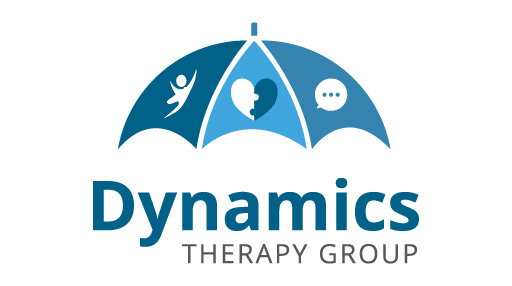
Stuttering is common in many young children, and it can occur as children are developing in their speech. Most children will often recover from stuttering as they progress. But when should parents be concerned about their child’s stuttering?
Let us dive in to find out more about the different symptoms and causes of stuttering in children.
WHAT IS STUTTERING?
Stuttering is a fluency disorder characterised by the atypical rate, rhythm and disfluencies of regular speech flow. Fluency refers to the continuity of rate, smoothness and effort in speech production. All speakers may present with disfluencies in conversation. This is normal as people may hesitate when speaking and will use fillers such as, ‘like’ or ‘uh’ and ‘um’, or repeat a word or phrase. These are common and are called typical disfluencies or non-fluencies (ASHA, 2021).
According to the American’s National Institute on Deafness and Other Communication Disorders (NIDCD), “Stuttering is characterised by repetition of sounds, syllables, or words; prolongation of sounds; and interruptions in speech known as blocks. An individual who stutters exactly knows what he or she would like to say but has trouble producing a normal flow of speech. These speech disruptions may be accompanied by struggle behaviours, such as rapid eye blinks or tremors of the lips…Stuttering is sometimes referred to as stammering and by a broader term, disfluent speech.”
CAUSES OF STUTTERING
The onset of stuttering generally occurs in childhood. It is most prevalent in children aged between 2 and 6 years, affecting 5 to 10% of them, with a higher percentage of children being boys. Although some children outgrow stuttering, approximately 25% of children continue to stutter even when they reach adulthood. (NIDCD)
Many children experience normal periods of disfluency lasting less than 6 months. However, stuttering that lasts longer than 6 months may require treatment.
The exact cause of stuttering is currently unknown, although there are possible causes, such as:
- Family History. Many people who stutter also have a family member who stutters
- Variation in the Brain. People who stutter may have minor differences in the way their brain functions while speaking
External and other risk factors may also contribute to stuttering, although they are not a direct cause of stuttering. These external factors include the child being placed in a stressful setting, having to speak to a group of people and when the child is feeling excited, tired, hurried or self-conscious.
The risk factors can include:
- Gender: Boys have a higher chance to continue stuttering as compared to girls.
- Age of stuttering onset: Children who begin stuttering at 3½ years old or later are more likely to continue stuttering.
- Family recovery patterns: Children with family members who continued stuttering into adulthood are also more likely to stutter. (AHSA, 2021)
TYPES OF STUTTERING
The frequency, duration, type and severity of stuttering can vary greatly, depending on the child and the environment or the situation they are in.
- Developmental Stuttering – stuttering that occurs during the child’s speech and language developmental stage. This typically affects children who are below 5 years of age. Although, the child is able to recover from stuttering without any treatment most of the time.
- Neurogenic Stuttering – stuttering that occurs when there are abnormalities between the child’s brain and nerves and muscles that affect speech. This can happen after a traumatic brain injury or stroke.
- Psychogenic – stuttering that occurs when the child’s ability to think and reason is affected. This can also be caused by severe emotional traumas.
STUTTERING SYMPTOMS
Here are some of the common signs of a child who stutters:
- Has difficulty starting a word, phrase or sentence
- Prolongs a word or sounds within a word, e.g. Hhhhhello
- Repeats a sound, syllable or word, e.g. H-H-H-Hello
- Uses interjections, e.g. I am, erm, like…
- Hesitates or pauses before speaking, at certain syllables or words or within a word
- Experiences blocked speech, e.g. there is no sound (vocal blocks) in mid-sentence
Accompanying symptoms include physical changes, such as:
- Rapid and excessive eye blinks
- Facial tics
- Head jerks
- Fists clenching
- Tension in face and body
Stuttering can also lead to various issues and challenges, such as:
- Experiencing problems communicating with others
- Being anxious about speaking
- Not speaking or avoiding situations that require speaking
- Loss of social, school or work participation and success
- Being bullied or teased
- Having a low self-esteem (MFMER,2021)
WHEN STUTTERING IS A CAUSE FOR CONCERN
If you are concerned about your child’s disfluencies, it is best to seek professional help from a Speech-Language Therapist (Speech Therapist) as early as possible. Early assessment can reduce the chances of continued stuttering in your child.
Contact a Speech Therapist for an assessment if your child experiences any of the following:
- Stuttering that has lasts for 6–12 months or more
- Starts stuttering late (after 3½ years old)
- Has been stuttering more often
- Has frequent tension, struggles and other physical changes when talking
- Avoids talking entirely or saying certain words,
- Has voiced out their struggles or challenges with talking
- There is a family history of stuttering
- Experiences other speech and language issues
- Has low self-esteem or self-confidence due to stuttering
In addition, it is recommended that you consult a Speech Therapist if you notice any other signs which are related to your child’s communication and disfluencies.
TREATMENT FOR STUTTERING
It is best to consult an experienced Speech Therapist to assess your child’s condition and determine the best course of action. A Speech Therapist will assess, diagnose, develop person-centred goals and use evidence-based techniques to provide appropriate and effective intervention for children who present with fluency and/or communication disorders.
There are various treatment options to help with stuttering. Treatment will depend on one or more of the following:
- How much your child stutters
- How your child reacts when stuttering
- How stuttering affects your child’s everyday life
- How others react to your child when they stutter
- Your child’s age
For preschool children, treatment may include the use of direct or indirect strategies. What are they?
- Direct strategies help your child change how they speak.
- Indirect strategies are ways to help make it easier for your child to talk.
These strategies can include slowing down the child’s speech and asking fewer questions (ASHA, 2021). Treatment for stuttering is highly individualised. The Lidcombe Program (for ages 2-6 years), with evidence of effective treatment for ages 7-12, and the Camperdown Program (for ages 13 and up), are just two Evidence-Based Practice (EBP) intervention programmes that a Speech Therapist may use to treat stuttering.
The Lidcombe Program is considered a direct treatment. This means that it involves the parent commenting directly about the child’s speech. The parental feedback is generally positive and the parent comments predominately when the child speaks without stuttering and occasionally, when the child stutters. The parent does not comment on the child’s speech all the time, only during specific times of the day. To find out more information about the Lidcombe Program you can visit https://www.lidcombeprogram.org/
At Dynamics, we have a strong team of Speech Therapists who are experienced in diagnosing and treating stuttering in children. We are committed to providing high-quality personalised therapeutic care to each child and working closely with their parents and/or primary caregivers to ensure a more integrated and effective treatment. To facilitate development in all areas of adaptive living, we also provide holistic support through seamless and hassle-free collaborations with specialists from Dynamics’ in-house multidisciplinary team, such as Occupational Therapists, Educational Therapists, Applied Behaviour Analysis (ABA) Therapists, Psychologists and more. Our sessions can be conducted at our centre, in the comfort of your home (Therapy@Home), online (TeleHealth) or a combination (Hybrid).
14 TIPS TO HELP CHILDREN MANAGE STUTTERING
Parental and caregiver’s involvement play an important role in the success of their child’s treatment. A treatment team usually includes the parents, their child, other family members and the child’s teacher.
In addition to the professional intervention, the child’s parents and/or primary caregiver can also help their child implement appropriate exercises or set up useful reminders, whether at home or during social interactions. The child’s parents and/or caregiver should consult their child’s Speech Therapist on appropriate and feasible ways to reinforce the treatment outside of the therapy sessions.
Here, we share 14 useful tips that parents and/or caregivers can effectively communicate with a child who stutters and help the child manage and reduce stuttering (these tips are general guidelines and should be implemented in consultation with the child’s Speech Therapist):
- Allow talking to be fun and enjoyable for your child. Do not expect your child to speak precisely or correctly at all times.
- Use family mealtimes as a conversation time. Put away or turn off distractions such as mobile phones or TV.
- Avoid criticising or correcting your child with comments, such as “slow down” “take your time” or “take a deep breath.” These comments, though well-intentioned, will only make your child feel more self-conscious.
- Avoid having your child speak or read aloud when they are uncomfortable or when their stuttering increases. Instead, during such times, encourage them to engage in activities that do not require a lot of talking.
- Do not interrupt your child or tell them to start over.
- Refrain from telling your child to think before speaking.
- Provide a calm atmosphere in the home. Try to slow down the pace of family life.
- Speak slowly and clearly when talking to your child or others in the child’s presence. This takes practice! Modelling a slow rate of speech will help improve your child’s fluency.
- Maintain eye contact with your child. Try not to look away or show signs of being upset when your child stutters.
- Let your child speak for themselves and allow them to finish their thoughts and sentences. Pause before responding to your child’s questions or comments.
- Remember that hesitations and repetitions are often a normal part of speech and language development.
- Be patient and give your child enough time to complete what they are trying to say.
- Avoid finishing your child’s sentences for them.
- Avoid interrupting your child when they stutter while speaking.
(Kidshealth, 2021)
Importantly, assure your child that they are accepted and supported by you and the people who matter to them. This can also help improve your child’s emotional and mental states.
Additional Information and Resources:
https://www.betterhealth.vic.gov.au/health/conditionsandtreatments/stuttering




